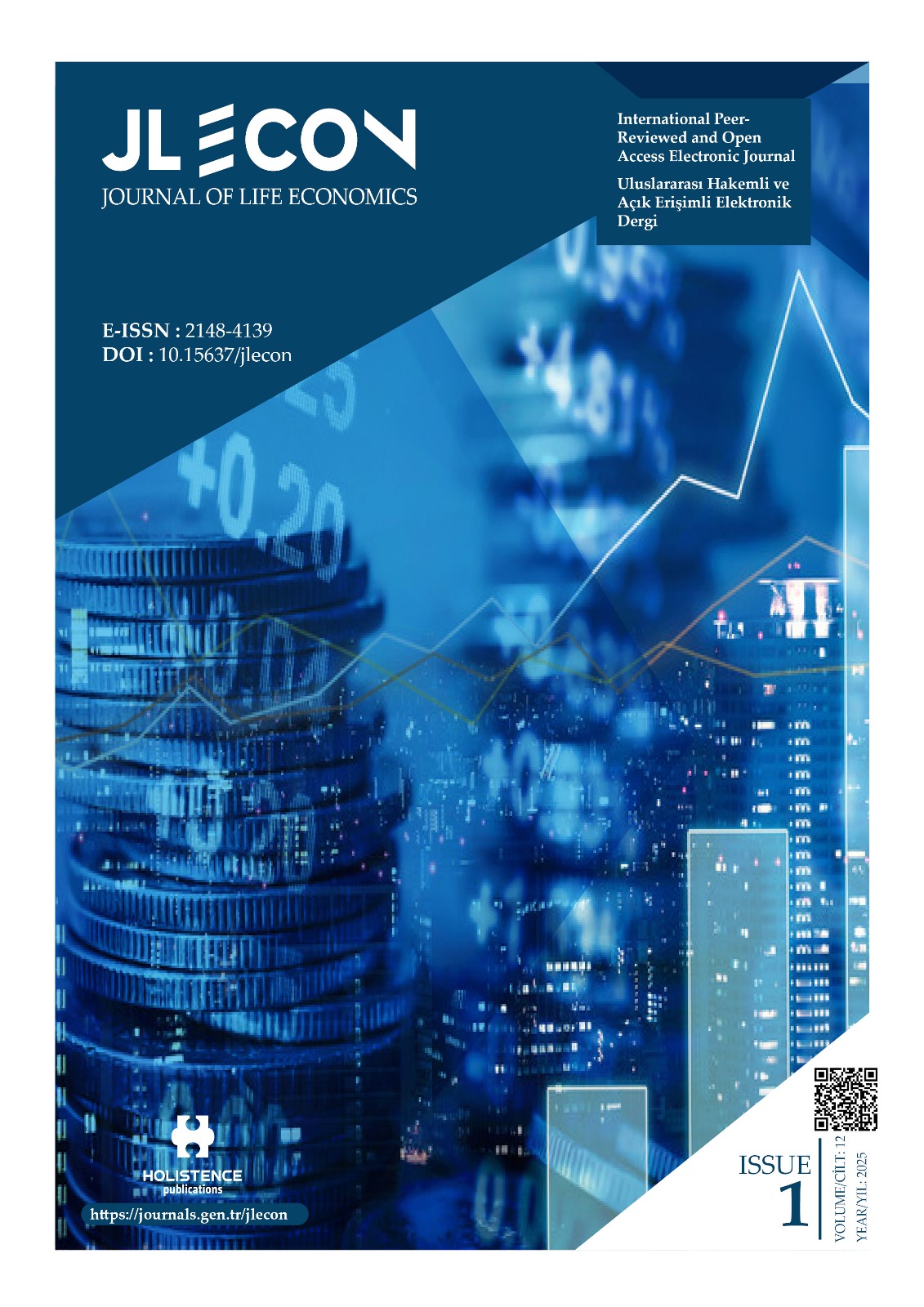Çin’in Afrika’da özel ekonomik bölgeler kurma tecrübesinden Türkiye ne öğrenebilir?
DOI:
https://doi.org/10.15637/jlecon.2720Keywords:
China, Africa, SEZ, OSB, Turkish Manufacturing IndustryAbstract
African countries, which have been under the interest and hegemony of Western countries for many years, have begun to evolve into a new era with China's Belt and Road Initiative in the last quarter century. It is seen that China has deepened its cooperation with African countries, especially those that have financial difficulties and lack infrastructure, but have natural resource wealth. While there are positive views on this relationship, there are also criticisms that gains are achieved with the policy of indebting countries that they cannot pay with luxurious infrastructure projects.
Turkiye's relationship with African countries has been diversifying with its long-standing foreign trade, infrastructure and housing construction projects spread across the continent, and energy investments. In parallel with this, Turkey is increasing its soft power on the continent with projects such as increasing education agreements, NGO collaborations, and TIKA aid.
This article focuses on what lessons can be learned for Turkish manufacturing industry investors who want to expand their cooperation with African countries through the example of China's establishment of 'Special Economic Production Zones', which it first started in its own country, then moved to many countries, and finally concentrated in Africa.
In this study, face-to-face interviews with continental experts, country reports and country statistics, as well as World Bank studies were used as methods. In addition, datas from the Chinese statistical office and the Ministry of Commerce were used regarding the special production zones in the continent.
As a result of the study, it was concluded that Africa could be one of the solutions for Turkiye's increasing food needs and new investments in low and medium technology sectors. With the expansion of construction and trade activities in the continent, it was concluded that in addition to all North African countries in the food, textile, construction materials and main metal industry sectors, countries such as Ethiopia, Senegal, Nigeria, Ghana, Republic of South Africa, Tanzania and Kenya from Sub-Saharan Africa are centers of attraction for Turkish investors.
The originality of the study is that it includes analyses that can be used on a state and private company basis in Turkiye's foreign investment and sector planning, covering all African countries.
Downloads
References
ABDUSHARIPOVICH, S.S. (2018), Special Economic Zones as an Engine of Regional Economic Development: the best Practices and Implications for Uzbekistan. International Journal of Management Science and Business Adminstration, 48-55.
CAROL, N. & JOHN P., (2017), UN University, Industrial Clusters, The Case for Special Economic Zones in Africa.
DANJA, I. I., & WANG, X. (2024). Matching Comparative Advantages to Special Economic Zones for Sustainable Industrialization. Heliyon, 10(14).
DEİK (2021b). Afrika Kıtasal Serbest Ticaret Bölgesi (AfCFTA) ve Türk Firmalarına Etkisi, İstanbul.
DENİZ, İ. (2020), Afrika’da İş Birliği ve Rekabet Türkiye ve Çin, Siyaset, Ekonomi ve Toplum Araştırmaları Vakfı / Seta Raporu, Turkuvaz Haberleşme ve Yayıncılık A.Ş.
DERİNCE, V. (2024). Türkiye-Afrika ekonomik ilişkilerinin Afrika Kıtasal Serbest Ticaret Bölgesi Anlaşması (AFCFTA) açısından analizi (Master's thesis, Hasan Kalyoncu Üniversitesi Lisansüstü Eğitim Enstitüsü İktisat Ana Bilim Dalı).
DIANXUN, L., & ZHOU H., (2023) China-Africa Economic and Trade Relationship Report 2023.
DIXON, L. R. M. (2024). The Impact of Chinese Special Economic Zones on Manufacturing and Employment in West Africa. Chinese Journal of International Review.
DOBRONOGOV, A. & FAROLE, T. (2012): An Economic Integration Zone for the East African Community: Exploiting Regional Potential and Addressing Commitment challenges. World Bank Policy Research Working Paper 5967. Washington. World Bank.
GOODBURN, C., KNOERICH, J., MISHRA, S., & CALABRESE, L. (2024). Zones of Contention: Performance, Pitfalls and Politics of China-Associated Economic Development Zones in Africa. King’s College London
MASSIL, J. K., & ERIC, T. T. J. (2024). Do Special Economic Zones Help The Diversification of African Economies? https://doi.org/10.21203/rs.3.rs-4083488/v1
MOSES, O., NGUI, D., ENGEL, L. & KEDIR, A., (2024) China-Africa Economic Bulletin, BU Global Development Policy Center,
MURINGA, T. P., & SHAVA, E. (2025). Learning and Unlearning: Core Leadership Competencies for Driving Success in Special Economic Zones in South Africa, Social Sciences, 14(2), 88.
https://www.tcmb.gov.tr/wps/wcm/connect/cb23c98d-d9a5-465f-8c9c-9f84b533aaf8/uyp.pdf?MOD=AJPERES&CACHEID=ROOTWORKSPACE-cb23c98d-d9a5-465f-8 (Erişim tarihi: 14.02.2025)
https://www.imf.org/external/datamapper/profile/ZMB (Erişim tarihi: 15.02.2025)
https://data.tuik.gov.tr/Kategori/GetKategori?p=dis-ticaret-104 (Erişim tarihi: 14.02.2025)
https://unctadstat.unctad.org/datacentre/dataviewer/US.FdiFlowsStock (Erişim tarihi: 15.02.2025)
https://www.sais-cari.org/data (Erişim tarihi: 01.02.2025)
https://en.wikipedia.org/wiki/List_of_African_countries_by_population (Erişim tarihi: 10.02.2025)
National Bureau of Statistics of China https://data.stats.gov.cn/english/index.htm (Erişim tarihi: 14.02.2025)
https://www.africaeconomiczones.com/aezo-outlook/africa-economic- (Erişim tarihi: 10.02.2025)
https://www.bu.edu/gdp/2024/08/21/relative-risk-and-the-rate-of-return-chinese-loans-to-africa-database-2000-2023/ (Erişim tarihi: 10.03.2025)
https://www.trade.gov/country-commercial-guides/kenya-digital-economy#:~:text=According%20to%20the%20Business%20Monitor,the%20country's%20GDP%20by%202025. (Erişim tarihi: 10.03.2025)
Downloads
Published
How to Cite
Issue
Section
License
Copyright (c) 2025 Holistence Publications

This work is licensed under a Creative Commons Attribution 4.0 International License.
When the article is accepted for publication in the Journal of Life Economics, authors transfer all copyright in the article to the Holistence Publications.The authors reserve all proprietary right other than copyright, such as patent rights.
Everyone who is listed as an author in this article should have made a substantial, direct, intellectual contribution to the work and should take public responsibility for it.
This paper contains works that have not previously published or not under consideration for publication in other journals.

















